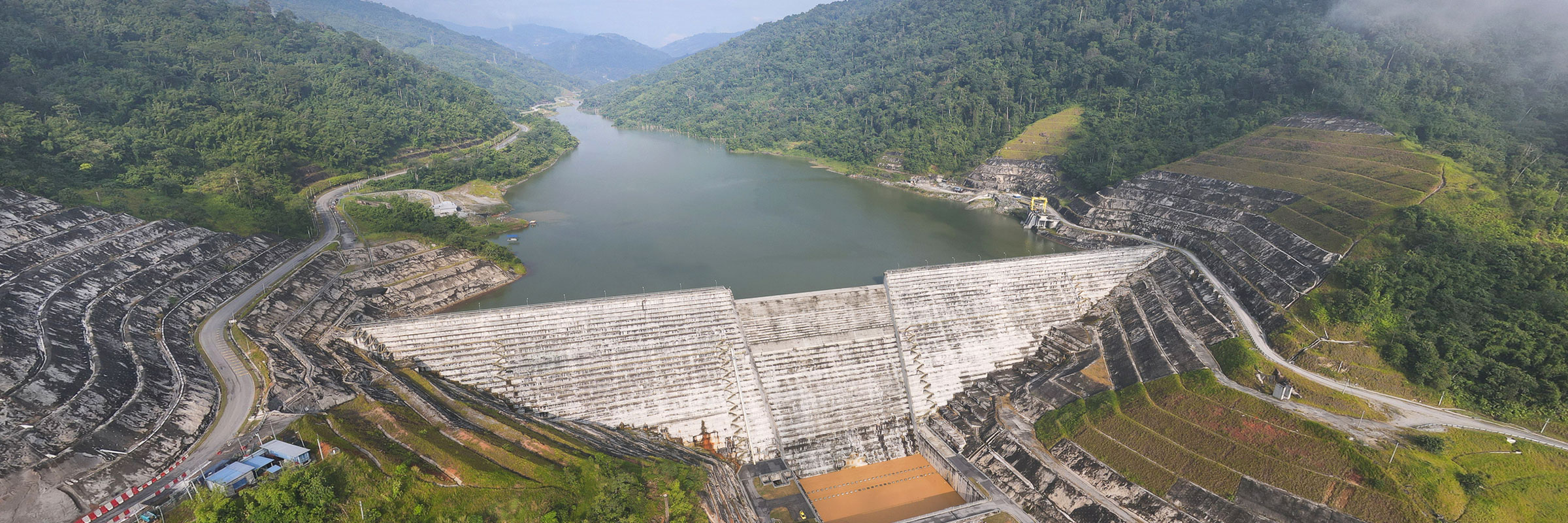
Adapting to the unknown
As the excavation of the dam foundation progressed, it became apparent that the weathering of the rock was more extensive on the right abutment of the dam than had been foreseen. This required additional excavation of unsuitable material and the construction of an earth and rockfill embankment to re-establish the road alignment bypassing the dam site.
Apart from the seven-kilometre-long power waterway, the project includes two weirs and two water transfer tunnels of 7.5 and 8.5 kilometres in length, which divert water to the main dam from the neighbouring Lemoi and Telom River catchments. The two water transfer tunnels contribute about 67% to the combined flow of water available for power generation, making the project economically viable. Tunnelling for the main power waterway and the two water transfer tunnels was challenging and required the team to apply creative problem-solving skills.
The water transfer tunnels were to be constructed by a tunnel boring machine. During the excavation of Telom tunnel, very poor rock conditions were encountered about 43% into the tunnel. Following extensive grouting to stabilize the surrounding rock, we supported the contractor’s proposal to construct a by-pass around the tunnel boring machine and complete the remaining length of tunnel by conventional drill and blast excavation.
The entire project is designed to make the most of the dam’s location in a narrow valley on the Bertam River. The reservoir, which has a surface area of 950,000 square metres and a storage capacity of 24 million cubic metres, is located 350 metres above the underground powerhouse, thus providing the head difference available for power generation before the water is released back into the Bertam River, about six kilometres downstream of the main dam.





Global network of connected specialists
“Many consulting engineering firms have to engage external contractors or subcontractors for specific or niche elements of a project,” comments Andreas. “It can be difficult to access these resources or can add another layer of complexity due to being hampered by contractual arrangements on scope of work.”
“By tapping into our global network of specialists, we were able to bypass these hurdles and connect to the right teams within our own in-house pool of engineers and specialists thus mobilising the right expertise for the project without delay. This also has the benefit of bringing together technical expertise and local knowledge which is cost effective and highly valued by our clients.”
Our impact
Begun in 2011, the Ulu Jelai Hydroelectric Project is now complete but its impact on communities continues to be felt. The 326 GWh annually generated energy contributes to Malaysia’s power supply system and helps to meet the surge in demand at peak hours of the day in a country that has undergone a remarkable transformation in a matter of a few decades. The hydropower plant will also make the power grid more stable and less prone to frequency fluctuations.
The project also had residual impacts, with housing and infrastructure improvements to local communities in the area, boosting the local economy.
SMEC is continuing its involvement in the project through the design of a regulating weir, downstream of the power station’s tailrace tunnel, to transform the intermittent power station discharges to environmentally more favourable uniform river flow conditions.




